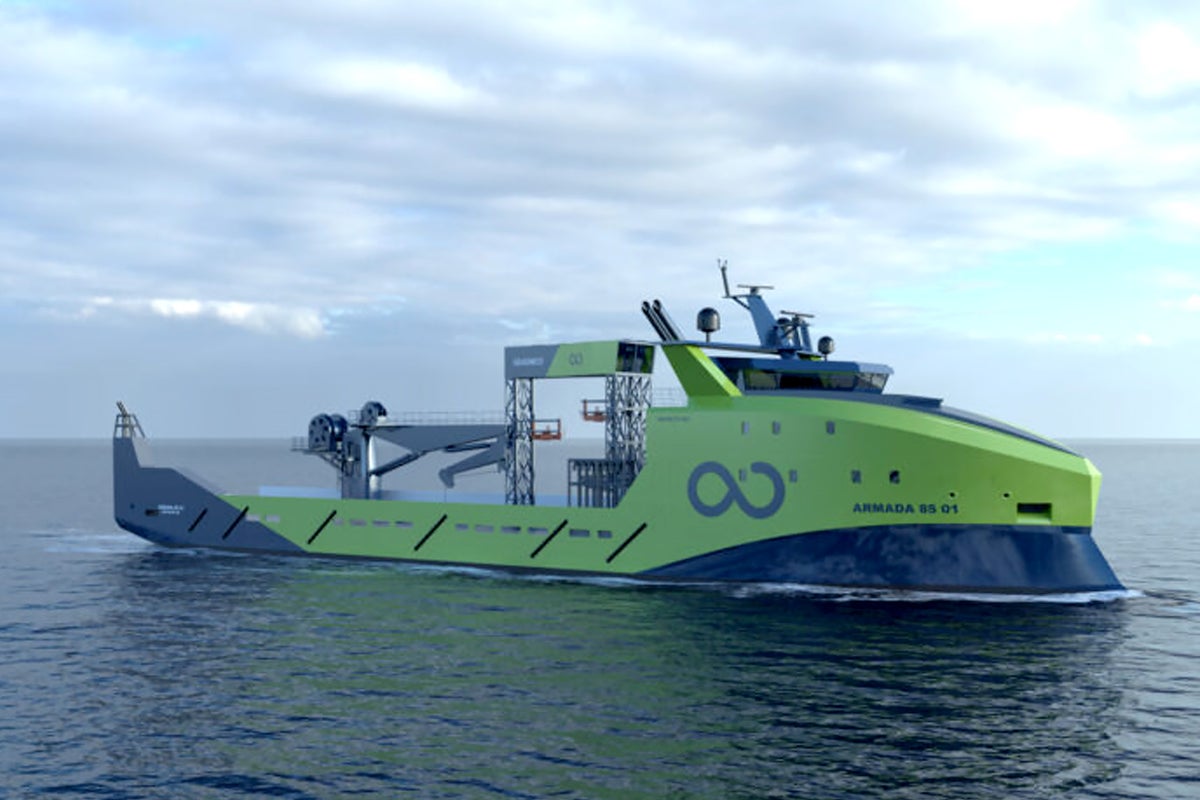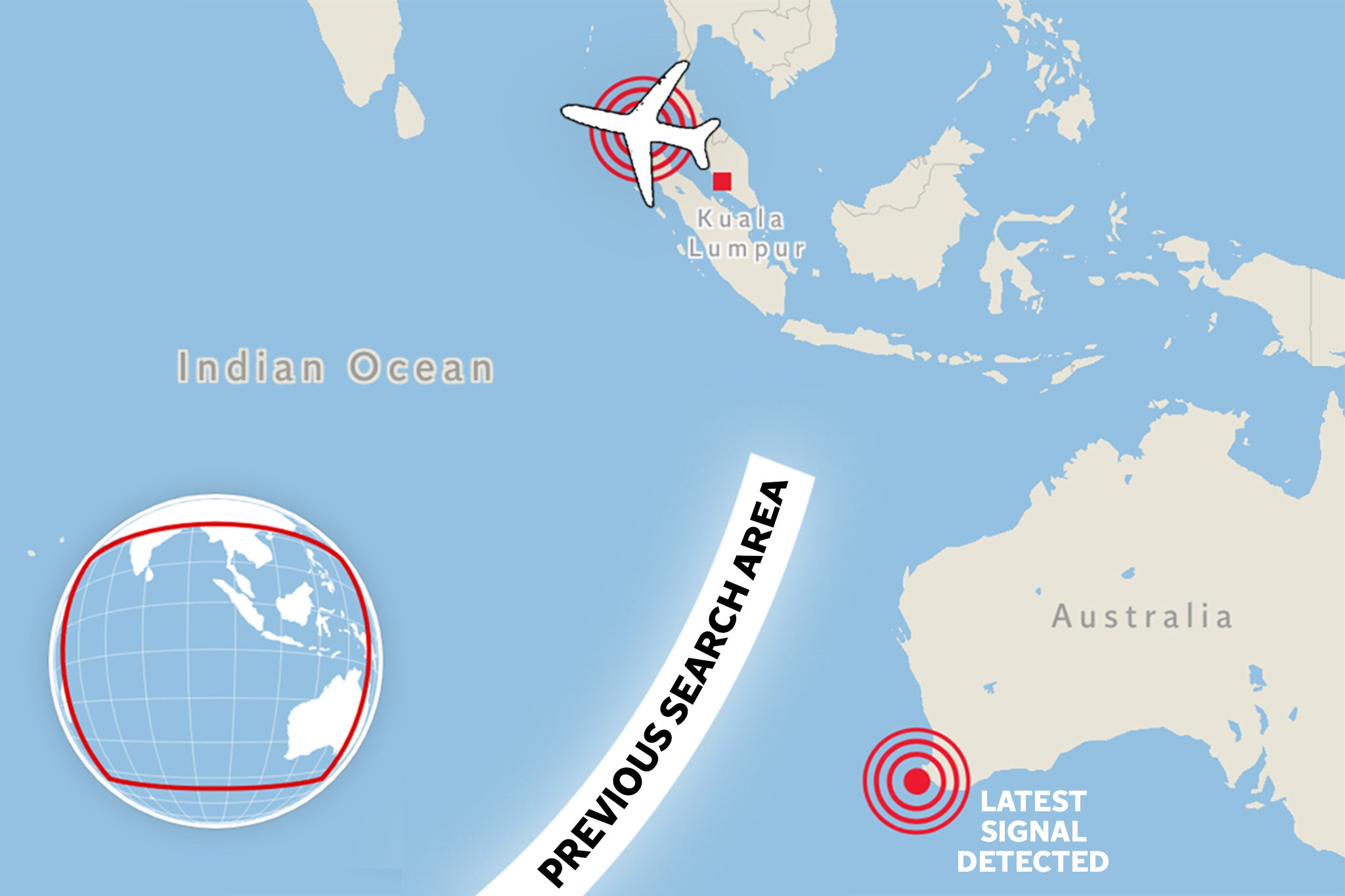British team begins potential final search for missing MH370 Malaysia Airlines flight
New area about 1,500km off the coast of Australia to be scoured in search for the Boeing 777

Your support helps us to tell the story
From reproductive rights to climate change to Big Tech, The Independent is on the ground when the story is developing. Whether it's investigating the financials of Elon Musk's pro-Trump PAC or producing our latest documentary, 'The A Word', which shines a light on the American women fighting for reproductive rights, we know how important it is to parse out the facts from the messaging.
At such a critical moment in US history, we need reporters on the ground. Your donation allows us to keep sending journalists to speak to both sides of the story.
The Independent is trusted by Americans across the entire political spectrum. And unlike many other quality news outlets, we choose not to lock Americans out of our reporting and analysis with paywalls. We believe quality journalism should be available to everyone, paid for by those who can afford it.
Your support makes all the difference.
A British marine robotics company has launched what could be the final search for Malaysia Airlines flight MH370, over a decade after the Boeing 777 vanished.
Ocean Infinity’s deep-water support vessel Armada 7806 has reportedly begun scouring the seabed for the wreck as it attempts to solve one of aviation’s biggest mysteries.
Marine tracking websites show that the vessel arrived at a new search zone in the Indian Ocean over the weekend, reported The Telegraph.
The search mission, 1,200 miles off Perth, Australia, is expected to be the last sent looking for the plane that disappeared almost 11 years ago.
On 8 March 2014, the Malaysia Airlines flight with 239 passengers and crew onboard fell off air traffic control’s radar 40 minutes into its six-hour journey from Kuala Lumpur to Beijing.
Search efforts are understood to have already deployed autonomous underwater vehicles (AUVs) from the Ocean Infinity ship and started scans of the ocean floor.
The AUVs, able to descend to a depth of 6km, are operated via a satellite link from the company’s control centre in Southampton and are expected to explore four areas identified as potential crash sites by researchers.

AUVs on Ocean Infinity’s Armada 7806, built in 2023, are able to spend four days submerged, twice as long as their 2018 predecessors.
Malaysian transport minister Anthony Loke confirmed on Tuesday (25 February) that Ocean Infinity had resumed the hunt for the missing plane.
The new search is focused on a 15,000sq km arc in the southern Indian Ocean, based on data including satellite signals and disrupted radio transmissions, that Kuala Lumpur found to be “credible”.
In December, the Malaysian government confirmed that the search for the missing passenger jet would resume with Ocean Infinity on a “no find, no fee” agreement. The best time to undertake the search was identified between January and April.
Mr Loke welcomed the search and said they were still “finalising the details for the contract to be signed”.
“Nevertheless, we welcome the proactiveness of Ocean Infinity to search for MH370 as this is great news for all the victims’ next of kin.”
No final agreement has been announced between the government and the company, with Ocean Infinity’s current mission, around six weeks long, believed to be its own.
The Armada 7806 – considered the most technically advanced ship of its kind – is likely to search in three to four “hotspots” where researchers suggested the plane’s wreck of fuselage might be located.
The vessel is expected to spend up to six weeks surveying the area, with a break to restock supplies in Fremantle, Western Australia, which served as the base for previous search operations, The Telegraph reported.
The new search is focused around the arc of the southern Indian Ocean, the point where the plane is believed to have ended its journey. This arc was determined using satellite data from Inmarsat, which tracked the aircraft's final communications.
The second search zone has been identified further south based on the hypothesis that the jet may have travelled further than the previously estimated distance after running out of fuel.
A potential third search area has been identified using data from ham radio operators, whose WSPR transmitters send low-power radio pulses worldwide every two minutes.
When aircraft cross these signals, they can cause disturbances. Aerospace engineer Richard Godfrey analysed 130 such signal disruptions over the Indian Ocean on the night MH370 disappeared, suggesting they could form a “trail of crumbs” pointing to the jet’s final path.
The search in the fourth area would depend on the weather conditions.
For more travel news and advice, listen to Simon Calder’s podcast

 Tfoso
Tfoso 



















![The 2026 AI Search Benchmark Every SEO Leader Needs [Webinar] via @sejournal, @lorenbaker](https://www.searchenginejournal.com/wp-content/uploads/2025/11/1-259.png)












